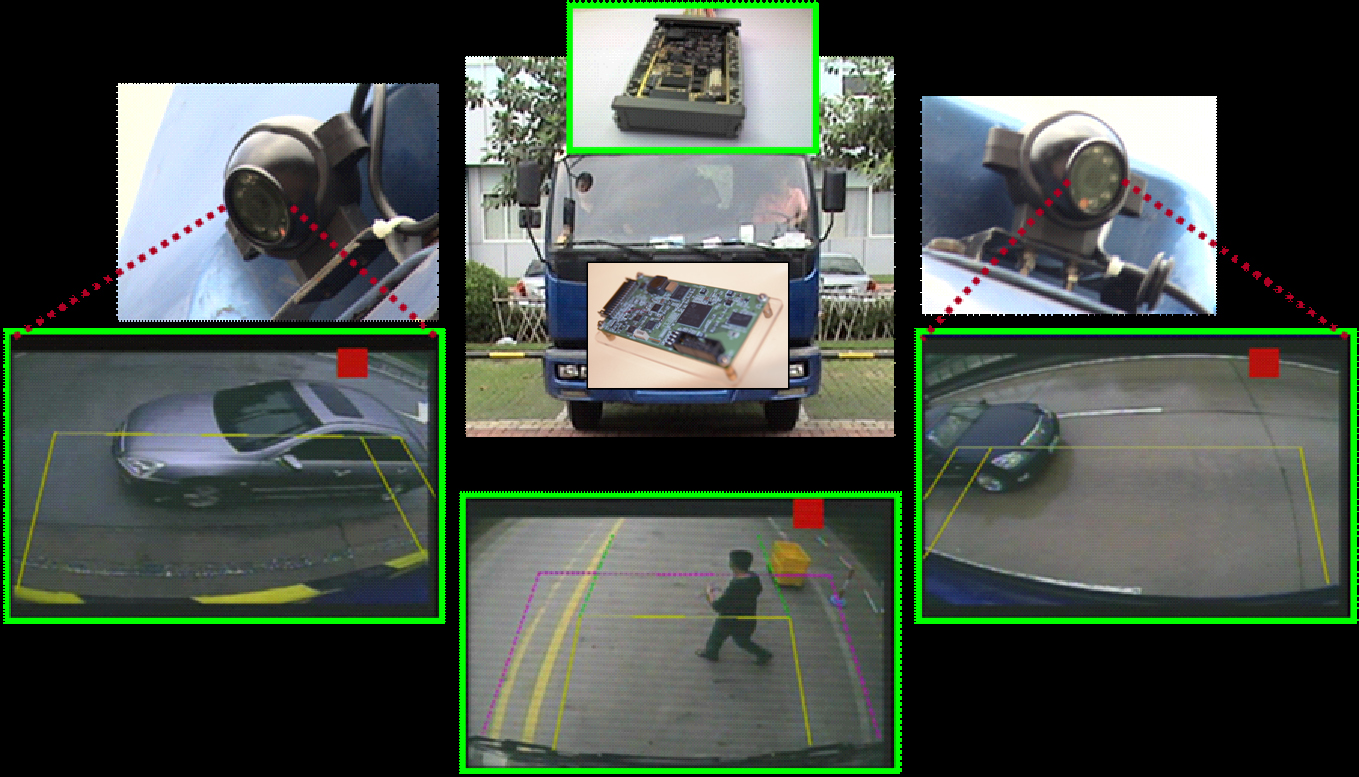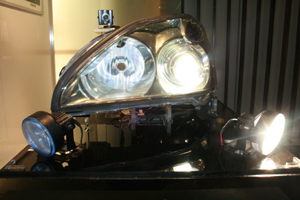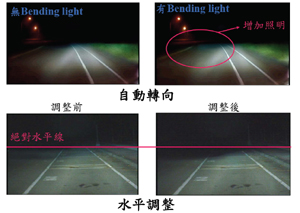ARTC in Taiwan Wins Two Silver Medals and Improves Driving Safety
2009/10/08 | By Quincy LiangThe Automotive Research & Testing Center (ARTC), a benchmark automotive R&D institute in Taiwan, may have broken new ground-coming up with effective solutions to address age-old problems as clearing blind-spots and adjust headlights to better illuminate curving roads-in its program to develop innovations that advance automotive operation and safety.

The ARTC entered two automotive innovations to compete in the 2009 Taipei International Invention Show & Technomart. One is the image type adaptive front-lighting system (IAFS) and the other the blind-spot detection system for semi-trailer rigs or 18-wheeler trucks. Both entries won Silver Medals for cutting-edge technology and innovation that specifically aim to minimize blind-spot hazards related to trucking and driving at night.
Blind-spot Sweeper
One of the oldest, most hazardous problems of driving is the blind-spot, which is exasperated in semi-trailer rigs that sit drivers very high and on chassis many times longer than typical cars, with such problem often unable to be overcome even with the aid of auxiliary mirrors. Realizing that "passive safety" measures are inadequate to address such issue, the ARTC has been investing to develop an active system to erase blind-spots on passenger cars that could be improved to work on commercial trucks.

The ARTC has developed an active, computerized imaging system that literally offers truckers the "all-seeing eye." With cameras mounted at different parts of a semi-trailer, this system, adopting a self-developed imaging mechanism, activates buzzers and LED lights as soon as it detects objects within blind-spots, hence achieving improved safety for truckers, nearby vehicles and pedestrians.
This active blind-spot sweeper has been developed by using image-based object recognition, image-feature analysis, object/space measurement, and signal integration
The Digital Signal Processors (DSP)-based system sweeps various areas, including front-ends of vehicles (3m), rear of outer mirrors (6m), and each side (3m), as well as adopting different interfaces as CAN BUS (speed, indicator), NTSC or PAL (camera), and GPIO (buzzer). Able to detect all types of vehicles and pedestrians between working temperatures of -40C and 85C, this system has two warning modes: LED lighting without enabling turn-signal and LED lighting-plus-beep with turn-signal enabled.

The ARTC said the global demand for this active safety system would rise along with raised awareness for safety by truckers and companies everywhere, adding that downstream suppliers would also benefit from the increased applications of such system, including suppliers of charge coupling device (CCD) and complementary metal-oxide-semiconductor (CMOS) cameras, vehicular safety recording products, and vehicle electronic products.
IAFS, Another Silver Medal Winner
The ARTC's other Silver Medal winner at the Taipei International Invention Show is the IAFS or Image-type Adaptive Front-lighting System. This ingenious system, using an image sensor to detect lane-dividing lines on roads in front of vehicles, estimates curves and vanishing points of roads to effectively improve visibility for drivers, especially at night, by adjusting headlamps vertically and horizontally. Such a system proves its true worth on curved roads, where fixed beams that point straight ahead simply cannot light up quickly vanishing roads, as well as being glare-free, a valuable merit in top-end headlamps.
The development of ARTC's IAFS has been realized by adopting several advanced technologies, including light-bending-control algorithm with vision-based system, auto-level-adjust algorithm with vision-based system, design of hardware module etc., enabling the detection of 3m-4m in lane widths and 30m-50m in frontal distance. The IAFS can turn headlamps between 0- to15 degrees, with precision of adjustment at 0.1-degree when headlamps are horizontal.
According to the ARTC, the IAFS differs totally from the existing AFS, which are sometimes installed on luxury cars to orient headlamps according to steering angle and vehicle speed for improved nighttime visibility. The IAFS, however, adopts the more advanced image-recognition technology without needing steering angle and G-sensor signal inputs. The vision-based operation enables independent turning of headlamps and auto-leveling at lower cost and with easier installation, so the IAFS has the potential to be a very marketable original equipment (OE) and aftermarket (AM) item.
In addition, the ARTC stressed, the IAFS offers makers of such new product (mainly auto-lamp companies) higher degree of competitiveness by allowing the integration with lane departure warning system (LDWS) or other advanced vision-based safety systems.
The IAFS prototype is the world's first image adapted headlamp (IAH), ARTC claimed.
In-sync Globally
C.C. Liao, assistant vice-president of ARTC, said that the program at the Center has been geared to be in synchronization with the international automotive industry. In the future, he stressed, the Center will continue to invest to develop more forward-looking systems to improve driving safety, energy-efficiency, and eco-friendliness, intelligent steering etc. Another of the Center's goals is to share its technology achievements with industry to help makers commercialize advanced systems, playing a key role to turn smart ideas and prototypes into business opportunities globally.
In November, Liao said, the ARTC will again be trying to build global presence for Taiwan-developed automotive technologies by showcasing the Center's R&D achievements at the globally-renowned iENA "Ideas-Inventions-New Products" exhibition in Nuremberg, Germany, where he brims with confidence to leave with more medals.




